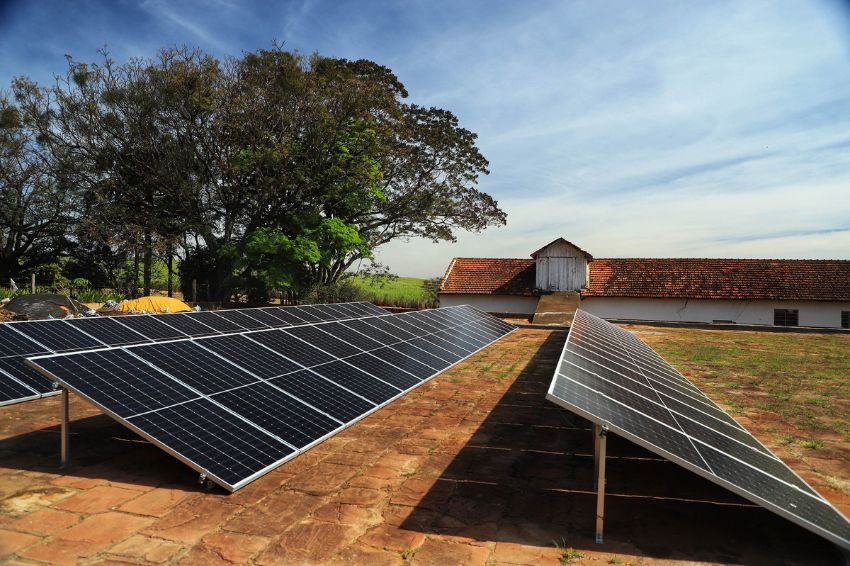The release of resources for rural producers through Harvest Plan 2023/2024 should boost the solar energy market and drive the sale of photovoltaic systems.
This is because small and medium-sized farmers can obtain resources from the Federal Government to finance innovation, modernization and sustainability projects in agricultural activities, such as, for example, the installation of photovoltaic projects.
In total, R$ 441 billion will be made available, with R$ 364.22 billion for medium and large producers, through Pronamp and similar.
The amount represents an increase of 27% compared to last year. For small producers covered by Pronaf, it will be R$ 77.7 billion, a volume 34% greater than in the last harvest.
Safra Plan for family farming in the Amazon will have incentives for solar energy
Mário Campo Grande, CEO of Solarprime, analyzes that, thinking about business projections and benefits, such as low interest rates, payment terms and extended grace periods, more than R$ 8 million should be transferred with the sale of photovoltaic systems.
“The forecast is to reach 2 MW of solar energy sold with the implementation of the Safra Plan. The expectation is to boost sales, mainly of minigeneration systems, intended for rural properties and which have approximately 100 thousand KWp of installed power”, he said.
“With this, we hope to contribute to the modernization and sustainability of the agro segment, which every year proves to be an important player in the growth of solar energy in the country”, added Grande.
How to request rural financing lines for solar energy?
In order for rural producers to purchase a photovoltaic system using resources from the Safra Plan, a rural project must be carried out through a partnership with an agricultural consultancy office or entities registered with the Special Secretariat for Family Agriculture and Agrarian Development .
Raphael Brito, founding partner of Solarprime, highlights that integrator companies need to know the rules to take advantage of this opportunity to boost system sales.
“It is important to know that rural producers generally already seek subsidized credit for other activities, even before learning about the photovoltaic solution. This credit can also be used to purchase a solar system, however, the project will need to be approved by the bank with which the producer already has approved credit”, he advises.
The executive also emphasizes that it is important to pay attention to the values of the equipment and installation, “which must be separately itemized for approval of the project at the banking institution”, he explains.
What programs are available?
The Safra Plan provides two types of programs for agricultural financing and credits: Pronaf (National Program for Strengthening Family Agriculture) and Pronamp (National Program for Supporting Medium-sized Rural Producers).
Pronaf is intended to stimulate income generation and improve the use of family labor, through financing rural agricultural and non-agricultural activities and services developed in rural establishments or in nearby community areas. This program finances costs and investments in implementing, expanding or modernizing the production structure of small producers.
For medium-sized producers, the recommended program is Pronamp. It finances the cost and investment for rural owners, squatters, tenants or partners who have at least 80% of their gross income originating from agricultural or plant extractive activities.
















2 Responses
This photo number 1, of this ground structure, modules leaning against the ground, this is wrong, outside of the standards. Imagine the dirt that this accumulates, and the pocket of winds that this generates behind it, all wrong. I am amazed that the solar channel posts a photo of this profile on a respectful channel... This shows the quality we are experiencing, incredible.
They disclose resources and banks create barriers. Today, banking bureaucracy discourages any rural producer, in addition to directing the customer to purchase kits only from suppliers registered with BNDES, requiring the FINAME code, thereby increasing the price of the same product by more than 25%. I think it's a lack of respect for the power of free choice in the market where we use competition to bargain prices but with that the bank itself directs who you can buy from. Another point is the slowness in banking service, taking months to contract a proposal. The bank's evaluation center does not keep up to date with technological innovations and implementation procedures and keeps demanding documents that only hinder the installation progress of the plants, demanding documents excessively. And so the facts unfold. The last one is to require the use of batteries in off-Grid systems intended for irrigation, as the plant is only designed to work for the day it needs without needing energy storage, but even then they only want to release it with batteries. Unfortunately there is a lot of lack of information. I hope they update and improve the procedures so that rural producers have better hiring conditions.